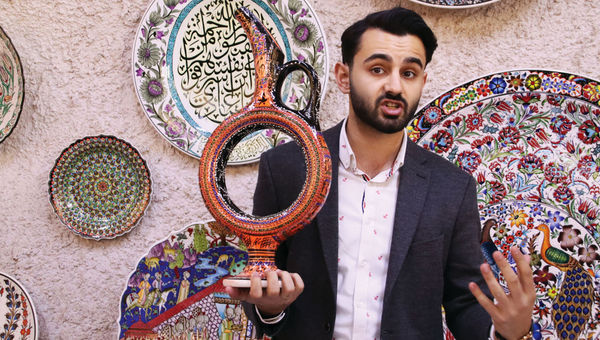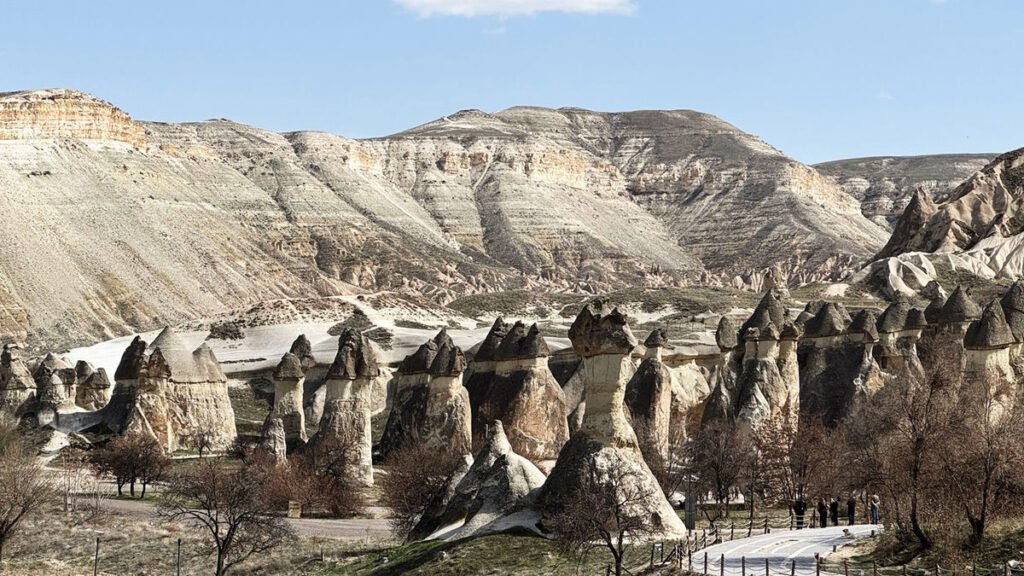Cappadocia, located in central Turkiye, has established itself as a premier tourist destination, predominantly showcased through captivating images of vibrant hot-air balloons soaring above its unique volcanic rock formations. The stunning views from above truly encapsulate the breathtaking beauty of this region.
However, the allure of Cappadocia extends beyond just balloon rides, which last about an hour. Pilgrims are drawn to the enchanting landscape that seamlessly integrates human-made structures with natural wonders. Historic towns like Göreme and Uçhisar boast skylines that reflect this beautiful cohabitation.
In contemporary times, many visitors choose to stay in specially designed cave hotels, offering an upscale experience in unique surroundings. For instance, the Gaijin Hotel exhibits the area’s rich cultural heritage, with the Turkish tourism ministry revealing that a significant percentage of the approximate 450 to 500 hotels in Cappadocia feature cave or cave-inspired accommodations.
Furthermore, the region is famous for its traditional handicrafts, including carpets, pottery, and wine, all boasting ancient origins. Cappadocia also provides a glimpse into spiritual practices through the mesmerizing performances of whirling dervishes.
The fairy chimneys were formed by volcanic action and erosion. Photo Credit: Nadine Godwin
Exploring Cappadocia’s Historical Significance
The historical depth of Cappadocia is exhibited in its numerous cave churches carved out during early Christian times. The area houses over 200 such churches, some having transformed into monasteries adorned with stunning frescoes from the 11th to 13th centuries.
The Göreme Open-Air Museum serves as a prime example, featuring rock-cut dwellings for clergy, a kitchen, as well as at least seven churches. Visitors are treated to an array of frescoes, with the Dark Church being the highlight due to its rich colors preserved from centuries of neglect following a rockfall.
Adding to its fascinating history, Cappadocia is home to 15 to 20 underground cities carved out of its soft rock dating back before the time of Christ. Among them is the Kaymaklı underground city, which boasts four of its eight levels open to tourists. This ancient refuge was previously utilized during turbulent times, such as Arab raids and World War I.
Exploring Kaymaklı involves navigating narrow tunnels and confined spaces, with facilities supporting comfortable movement through the maze of ancient habitats, stables, winemaking areas, and family quarters equipped with artifacts that speak to a bygone era.
Nature’s artistry is further evident in Pasabag, or Monks Valley, which showcases fairy chimneys that rise up to 50 feet. These natural structures, defined by a softer base and a harder cap, provide insight into the geological processes that shaped the landscape. Visitors can also explore the hermit cells carved into these formations or take in the sights on horseback.

Salih Akcan, director of Aldag Ceramic, displays a Hittite-inspired wine decanter created by his company. Photo Credit: Nadine Godwin
The Craftsmanship of Cappadocia: Ceramics, Carpets and Wine
The rich artisanal tradition of Cappadocia is exemplified in Avanos, a town famed for its red clay pottery. Known as a center for pottery making, particularly alongside Iznik, Avanos showcases artisans at work with techniques passed down through generations. Visitors can witness the creation of uniquely designed wine decanters with Hittite influences at Aldag Ceramic, where traditional hand-painting methods using mineral dyes prevail.
At the Cinar Carpets, a staggering selection of 8,500 pieces is on display, representing the vibrant weaving culture rooted in the region. Visitors can observe the meticulous processes that go into creating handmade carpets, often crafted by skilled women using a blend of wool, cotton, and silk.
To round off the experience, wine tastings such as those at the renowned Efendi Wine House in Ürgüp allow guests to sample locally produced wines, celebrated for their unique mineral characteristics derived from the rich soil of Cappadocia.
Additionally, the region offers the captivating experience of witnessing a **whirling dervish ceremony**, deeply rooted in Sufi traditions. One can witness this ceremonial performance at the charming Saruhan Caravanserai, allowing a meaningful glimpse into this spiritual practice.
Cappadocia is a treasure trove of natural beauty, history, and craftsmanship, making it an essential destination for those seeking to explore the rich tapestry of culture and tradition in Turkiye.



